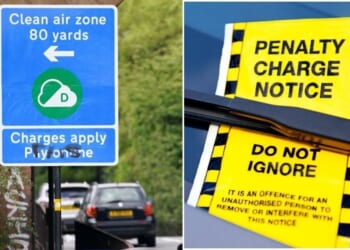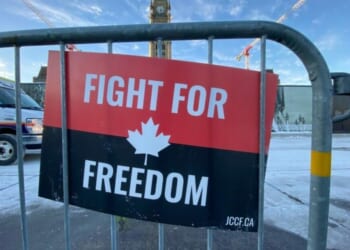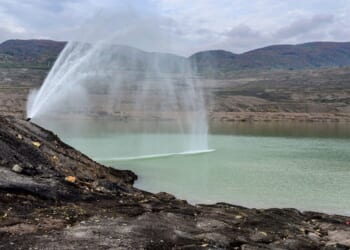In April 2020, as the COVID outbreak was unfolding, Walton County, Florida, closed all beaches–public and private. Did this ordinance, as applied to private beaches, constitute a taking of private property under the Fifth Amendment? Yes it did, according to the U.S. Court of Appeals for the Eleventh Circuit in an opinion released yesterday.
Judge Lagoa wrote for the panel in Alford v. Walton County, joined by Judges Brasher and Carnes. Her opinion begins:
The Takings Clause of the Fifth Amendment provides that “private property” shall not “be taken for public use, without just compensation.” U.S. Const. amend. V. Here, we consider whether a Walton County ordinance that proscribed all access to privately-owned beaches constitutes a “taking” under the Fifth Amendment. We hold that it does.
Despite the County’s significant infringement on property rights, the district court granted summary judgment in favor of Walton County, noting that the ordinance was enacted during the COVID-19 pandemic. But there is no COVID exception to the Takings Clause. Instead, the government must respect constitutional rights during public emergencies, lest the tools of our security become the means of our undoing. “The Founders recognized that the protection of private property is indispensable to the promotion of individual freedom. As John Adams tersely put it, ‘[p]roperty must be secured, or liberty cannot exist.'” Cedar Point Nursery v. Hassid, 594 U.S. 139, 147 (2021) (quoting Discourses on Davila, in 6 Works of John Adams 280 (C. Adams ed. 1851)).
Accordingly, after careful review, and with the benefit of oral argument, we affirm the district court’s dismissal of the Landowners’ prospective claims, but we reverse the district court’s judgment on the Landowners’ Takings Clause claim. Because we hold that the County effectuated a “taking” of the Landowners’ property, we need not address the Landowners’ claims under the Fourth and Fourteenth Amendments. On remand, the district court shall consider the amount of “just compensation” that the Landowners are entitled to. U.S. Const. amend. V.
Here is how Judge Lagoa summarizes the conclusion that taking occurred:
the district court held that Ordinance 2020-09 was neither a physical taking nor a regulatory taking. We disagree. This case involves a textbook physical taking: Walton County enacted an ordinance barring the Landowners from entering and remaining on their private property; Walton County’s officers physically occupied the Landowners’ property; and Walton County’s officers excluded the Landowners from their own property under threat of arrest and criminal prosecution. In other words, Walton County wrested the rights to possess, use, and exclude from the Landowners, and it took those rights for itself. That triggers the Landowner’s right to just compensation.
The analysis that follows digs in to how the Supreme Court’s decision in Cedar Point Nursery v. Hassid from 2021 informs the analysis of government restrictions on land-use that so pervasively infringe upon a landowner’s right to occupy their own land and exclude others.
Although this case involves a county ordinance, the Ordinance at issue effectuated a “physical appropriation” of the Landowner’s property. Id. Thus, “a per se taking has occurred, and Penn Central has no place.” Id. Ordinance 2020-09 physically appropriated the Landowners’ property because it barred their physical access to the land. And to enforce the Ordinance, the County entered the Landowners’ property at will for the specific purpose of excluding the Landowners. The County’s officers parked their vehicles on private property to deter entry, used private property as their own highway, and forced Landowners to vacate their property under threat of arrest. Put simply, the County “entered upon the surface of the land and t[ook] exclusive possession of it,” thereby triggering the right to just compensation. Causby, 328 U.S. at 261.
Notwithstanding these infringements on the right to possess and the right to exclude, the district court found that Ordinance 2020-09 was a simple “use” restriction. In so ruling, the district court emphasized that the Landowners retained the ability to sell their property, that the Ordinance was temporary, that the Landowners could still use part of their property, and that the Landowners could still exclude other citizens from their private property. None of these points makes a difference. At bottom, Ordinance 2020-09 prohibited the Landowners from physically accessing their beachfront property under any circumstances. That is different from a restriction on how the Landowners could use property they otherwise physically possessed.
Cedar Point is a useful comparison. Recognizing the distinction between physical appropriations and use restrictions, the Cedar Point Court rejected an argument advanced by California that the regulation permitting union organizers to enter private property was a mere use restriction. 594 U.S. at 154. There, a California regulation granted union organizers a right to access private farmland “for the purpose of meeting and talking with [agricultural] employees and soliciting their support.” Id. at 144 (quoting Cal. Code Regs., tit. 8, § 20900(e)). Under the regulation, the union organizers had a right to access the private farmland for up to three hours per day and 120 days per year. Id. Importantly, the regulation in Cedar Point did not infringe on the rights of the farm owners to possess, to use, or to dispose of their property. See id. Regardless, the Court held that the regulation effectuated a physical taking because it infringed on the owners’ right to exclude the union organizers. Id. at 149–54. In the Court’s words, “[s]aying that appropriation of a three hour per day, 120 day per year right to invade the growers’ premises ‘does not constitute a taking of a property interest but rather . . . a mere restriction on its use, is to use words in a manner that deprives them of all their ordinary meaning.'” Id. at 154 (quoting Nollan v. California Coastal Comm’n, 483 U.S. 825, 831 (1987)).
In other words, the mere fact that the Cedar Point landowners retained the rights to possess, to use, and to sell their property did not undermine the fact that a physical taking occurred. Id. California still “physically appropriated” the landowners’ property by granting the union organizers a right of entry. Id. Here, the physical taking at issue is even more severe than the one in Cedar Point. Unlike the regulation at issue in Cedar Point, Ordinance 2020-09 infringes on the right to exclude and the rights to possess and use. The Ordinance prohibited the Landowners from entering and remaining on their own property, while County officers entered and remained at will. The mere fact that the Landowners could—according to the district court—still “exclude the public” from their property is immaterial. In Cedar Point, it made no difference that the property owners retained the right to exclude everyone but the “union organizers.” See 594 U.S. at 144. Likewise, it makes no difference here that the Landowners retained the authority to exclude everyone other than County officials tasked with enforcing the Ordinance.
As this opinion indicates, Cedar Point may turn out to have been something of a turning point in the law of regulatory takings.
















